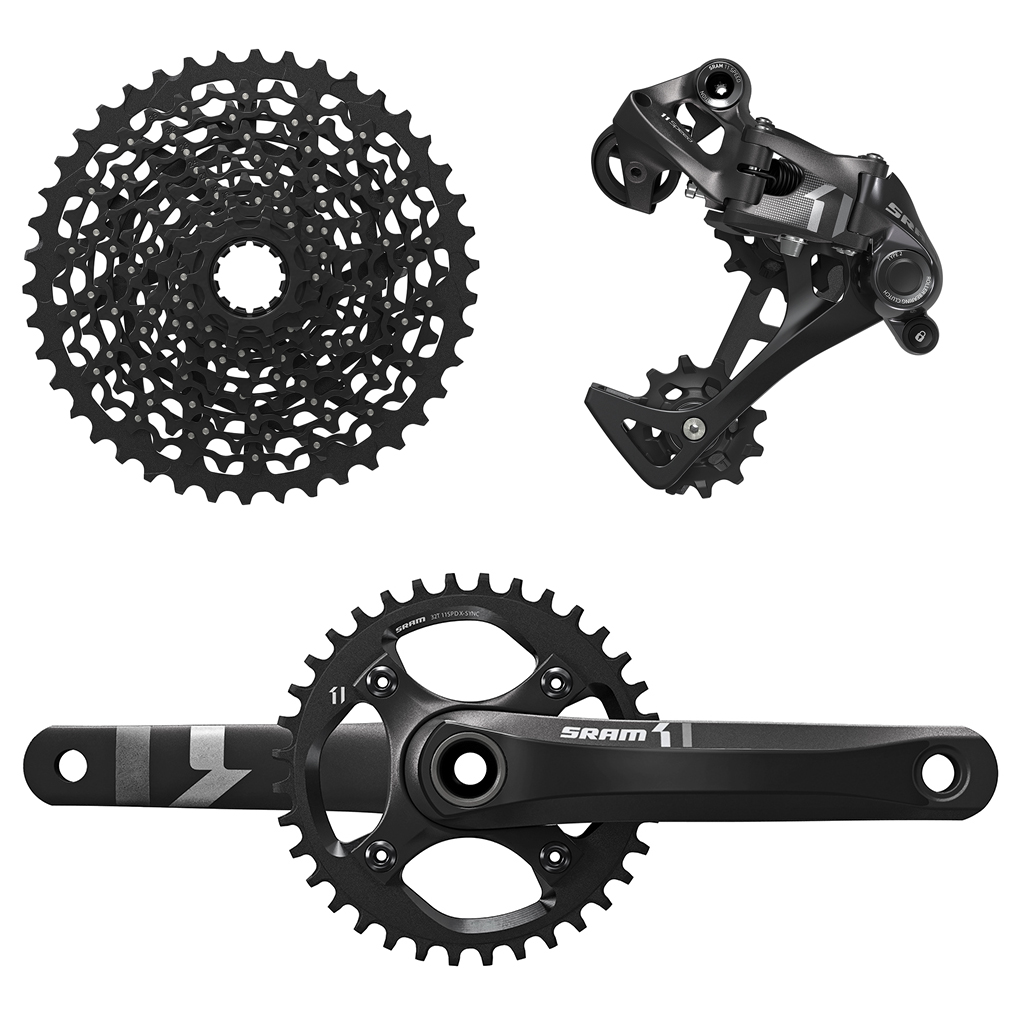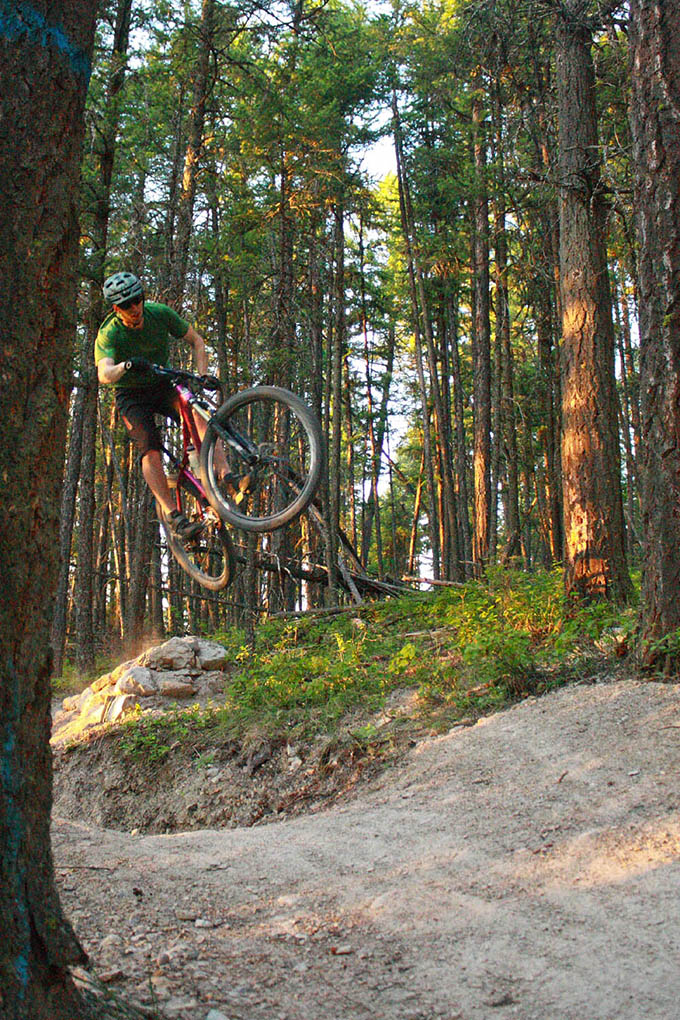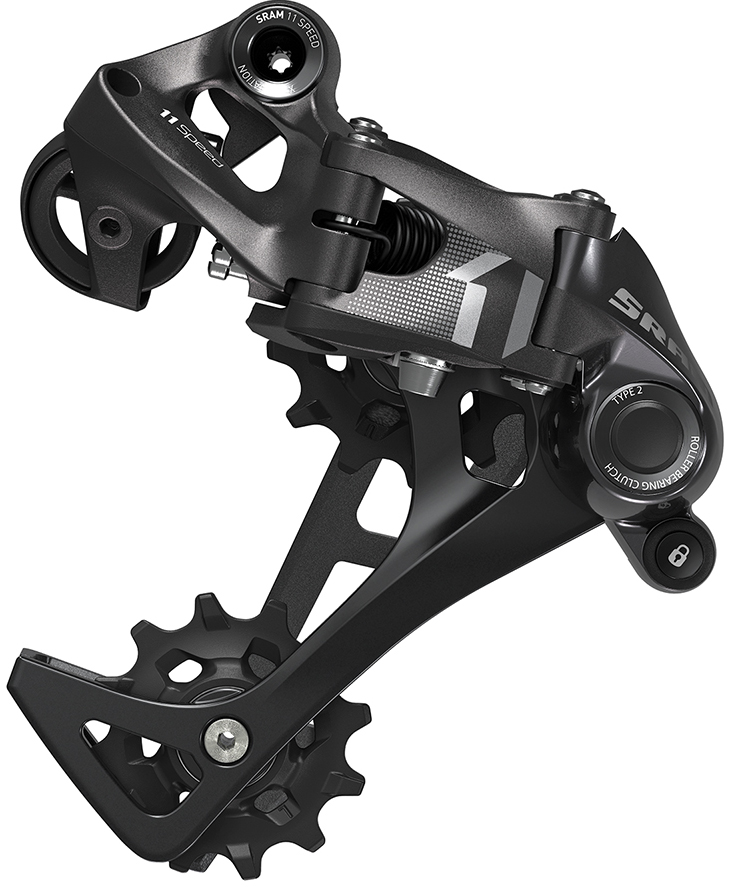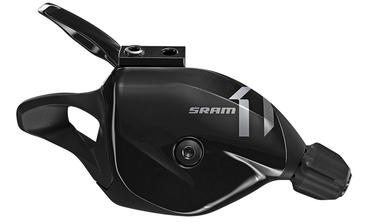
SRAM X1 Drivetrain, Part 2
Specs: 2014 SRAM X1 Group
(shifter, derailleur, crankset, cassette, chain)
Mounted to: Canfield Yelli Screamy (29er)
Total Measured Weight of Groupset: 1,733 grams
Intended Use: wide ranging, single-ring riding
Components:
- 10-42 XG-1180 Mini Cluster Cassette
- 11 Speed X-HORIZON Rear Derailleur
- 1400 Hollow Forged X-SYNC Crankset
- XD Driver Body
- 30, 32, 34, 36 or 38 tooth X-SYNC Chain Rings
- PC-X1 chain
- 11 Speed Trigger Shifter
Duration of Test: 35 days
Test Location: in and around Whitefish, Montana
Reviewer: 5’9” 150lbs
MSRP: $970
Part 1 of my SRAM X1 review features a broader discussion comparing the gearing, prices, and weights of other 10 & 11-speed setups to SRAM’s X1 system. I’ve also made my case for why I think X1 could affect bike design in the next couple years. Of course, that’s contingent upon the X1 components actually performing well, so let’s get down to it.
The Ride: Shifting & Maintenance
Everything shifts like it’s supposed to, in a nice, clean, quiet fashion. Compared to XX1, the X1 drivetrain isn’t quite as crisp. It still shifts very well, and the shifter action is smooth, but the XX1 is definitely a little more snappy on shifts in both directions, and the lever action is both lighter and more precise feeling. I attribute this difference almost entirely to the shifter’s construction (more on that below).
I put the X1 through a couple of rides that were typical of spring in Montana: miserably muddy, wet, and cold. This is a semi-sucky environment to ride in, but a great environment to punish a drivetrain. The X1 kit fared well; the cassette seemed to clear mud without any trouble, and everything kept shifting smoothly even after being coated in mud for a few hours. Things got a bit grittier, but the X1 bits handled the conditions as well as I could hope. The group certainly didn’t fare any worse than any other drivetrains that I’ve ridden in similar conditions (including more expensive ones).

At the end of those muddy rides, I quickly hosed the parts off and re-lubed before the next ride. The X1 setup happily went back to shifting nicely and running smoothly without any further maintenance or upkeep. In fact, in the month or so that I’ve been riding this kit, I’ve done nothing to it other than lube the chain and occasionally tweak the cable tension as the housing wears in, and everything is still happy and working well.
Shifting under load with the X1 was on par with any other high end drivetrain. The X1 parts would occasionally stumble a bit if I thumbed the shifter while cranking up a steep hill, but for the most part, my ill-timed shifts worked pretty well. Normal, semi-loaded shifts were as good as any other drivetrain I’ve ridden.
Here are a few notes concerning the individual bits and pieces of the X1 group, with comparisons to the XX1 group…
The Derailleur

Aside from their finish, the X1 derailleur and the XX1 derailleur are extremely similar to one another. Both of their pivots all seem to be constructed in the same manner, the bearings in the pulleys appear to be the same, and the adjustments and features are the same. There’s a very minor weight difference between the two. I would guess that the XX1 uses a titanium spring, and the latest version of the XX1 derailleur has a carbon cage for some additional weight savings (my XX1 derailleur, which is a couple years older, has the same derailleur as the current X1). All in all, I think the X1 derailleur gives up very little ground on the XX1 derailleur.
Both the XX1 and X1 derailleurs run the cable through a fairly circuitous route to get to the clamping bolt. I found this meant that, after installing a new cable, it can take a bit longer than normal to get everything properly seated in and shifting nicely. This isn’t a big deal at all, it’s just something to be aware of. I didn’t have to do anything creative with the b-tension screw. With the X1 derailleur mated to the X1 cassette, I’m somewhere comfortably in the middle of the screw’s adjustment range.
The cable routing on both the X1 and XX1 derailleur involves going around a pulley, and I am a little concerned that the pulley might gum up over time and negatively impact shifting. I’m also wondering if the cable is slightly more prone to wear given this routing. However, thus far I haven’t had any problems with the X1 derailleur, so for now this is all just idle speculation.
The Shifter
Unlike the derailleurs, there are some noticeable differences between the X1 and XX1 trigger shifters. Their internal design is slightly different, and the X1 shifter doesn’t have the XX1’s angle adjustment on the on the downshift lever.
The X1 shifter is constructed with a forged aluminum cover and downshift lever, whereas those pieces are carbon on the XX1. The XX1 also has a slightly different shape to the downshift lever, which I prefer; the X1’s lever sticks out more, and it’s a little less ergonomic.

The X1 shifter (as well as the X01 and XX1 shifters) have what SRAM calls “ZeroLoss technology,” which basically means that the shifter starts moving the cable immediately when you press the lever; there’s minimal slop or “free stroke” to the downshift lever. This is nice, and it helps makes the shifters feel snappier. When I go back to shifting on a 10-speed X9 setup without ZeroLoss, the X9’s shifter feels downright sloppy.
Like pretty much all of the other SRAM trigger shifters, the X1 can be mounted independently or mounted to a SRAM / Avid brake with a matchmaker mount (which is how mine are mounted). I find this style of mounting to be quick and easy.

Late comment on a good article, but I’m wondering if you ever ran into any rattling from your X1 derailleur? Mine has started after about 9 months, and is turning out to be really hard to pin down. For reference, it happens mostly when coasting — but not always — over sharp edged bumps, and sounds a lot like the rattling that the TA capture nut can make in a Fox fork when there is no axle installed, and you tap the fork. BB in a boxcar kind of thing.
Thanks for all the great reviews, Noah, even when I don’t agree with you, the insight is always interesting!
Hey Tom – my X1 is still going strong and rattle free. Just from what you described. If the elusive noise is actually in the derailleur and since it’s happening while coasting, it seems that it’d have to be in the clutch mechanism. Those clutches are somewhat known for making a bit of noise from time to time, although I’ve always experienced it as more of a “clunk” and less of a “rattle.”
If you’re fairly certain the noise is coming from the derailleur, you could take a stab at rebuilding the clutch. I don’t have any first hand experience in this ballpark, but based on tutorials like this one, it seems pretty straight forward:
http://bicyclingaustralia.com.au/2013/08/sram-type-2-overhaul
Hope you can get that sorted!
-Noah
SRAM X1 derailleur are the best choice for us that aren’t sponsored. I say that because last week I broke my X01 rear derailleur on a small rock (rock going between rays). The broken part is the carbon outer cage, and for my surprise, SRAM don’t make this piece was service part! Believe or not, if you broke you carbon outer cage (XX1 ou X01) you will need a new one. This is a poor service from SRAM.
(Data from SRAM Spare Parts Catalog 2016 • Rev A, pag 55)